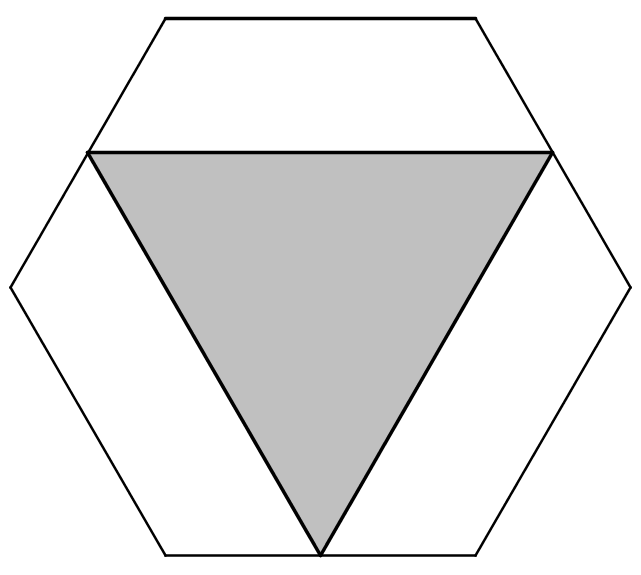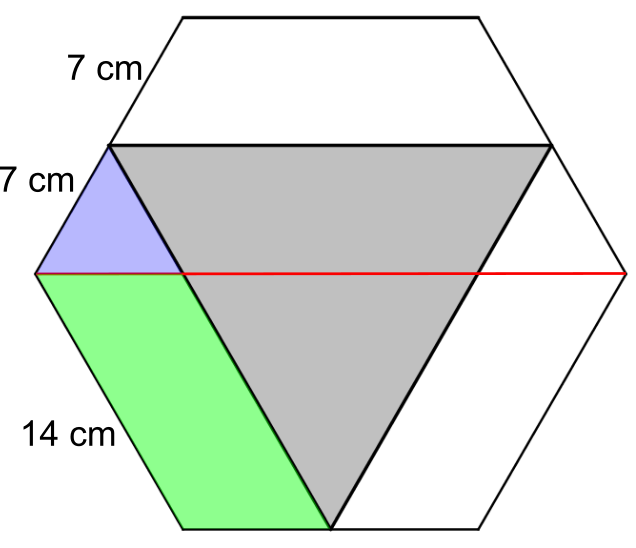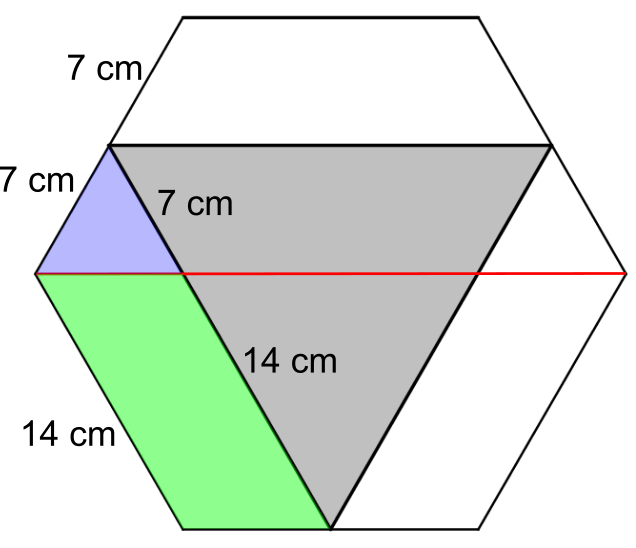Perimeter in a Hexagon
Can you find the perimeter of this triangle inscribed in a hexagon?
Problem
Image

The diagram shows a regular hexagon with sides of length 14 cm.
An equilateral triangle has been inscribed so that the vertices of the triangle are midpoints of the sides of the hexagon.
What is the perimeter of the triangle?
This problem is taken from the UKMT Mathematical Challenges.
An equilateral triangle has been inscribed so that the vertices of the triangle are midpoints of the sides of the hexagon.
What is the perimeter of the triangle?
This problem is taken from the UKMT Mathematical Challenges.
Student Solutions
Using an equilateral tiangle and a parallelogram
In the diagram below, the red line connects two of the hexagon's vertices. Since it is parallel to the top and bottom sides, and the sides of the grey triangle are parallel to the sides of the hexagon, the blue shape is an equilateral triangle and the green shape is a parallelogram.

That means we can label some lengths on the grey triangle:

So the side length of the grey triangle is 7 + 14 = 21 cm, so its perimeter is 21 $\times$ 3 = 63 cm.
Using lots of little triangles
We can split the hexagon up into smaller equilateral triangles as shown:

There are two small triangles along each side of the hexagon, so the side length of each small triangle is half of 14 cm, which is 7 cm.
There are three small triangles along each side of the shaded triangle, so the side length of the shaded triangle is 3 $\times$ 7 = 21 cm. So its perimeter is 21 $\times$ 3 = 63 cm.
In the diagram below, the red line connects two of the hexagon's vertices. Since it is parallel to the top and bottom sides, and the sides of the grey triangle are parallel to the sides of the hexagon, the blue shape is an equilateral triangle and the green shape is a parallelogram.
Image

That means we can label some lengths on the grey triangle:
Image

So the side length of the grey triangle is 7 + 14 = 21 cm, so its perimeter is 21 $\times$ 3 = 63 cm.
Using lots of little triangles
We can split the hexagon up into smaller equilateral triangles as shown:
Image
There are two small triangles along each side of the hexagon, so the side length of each small triangle is half of 14 cm, which is 7 cm.
There are three small triangles along each side of the shaded triangle, so the side length of the shaded triangle is 3 $\times$ 7 = 21 cm. So its perimeter is 21 $\times$ 3 = 63 cm.
